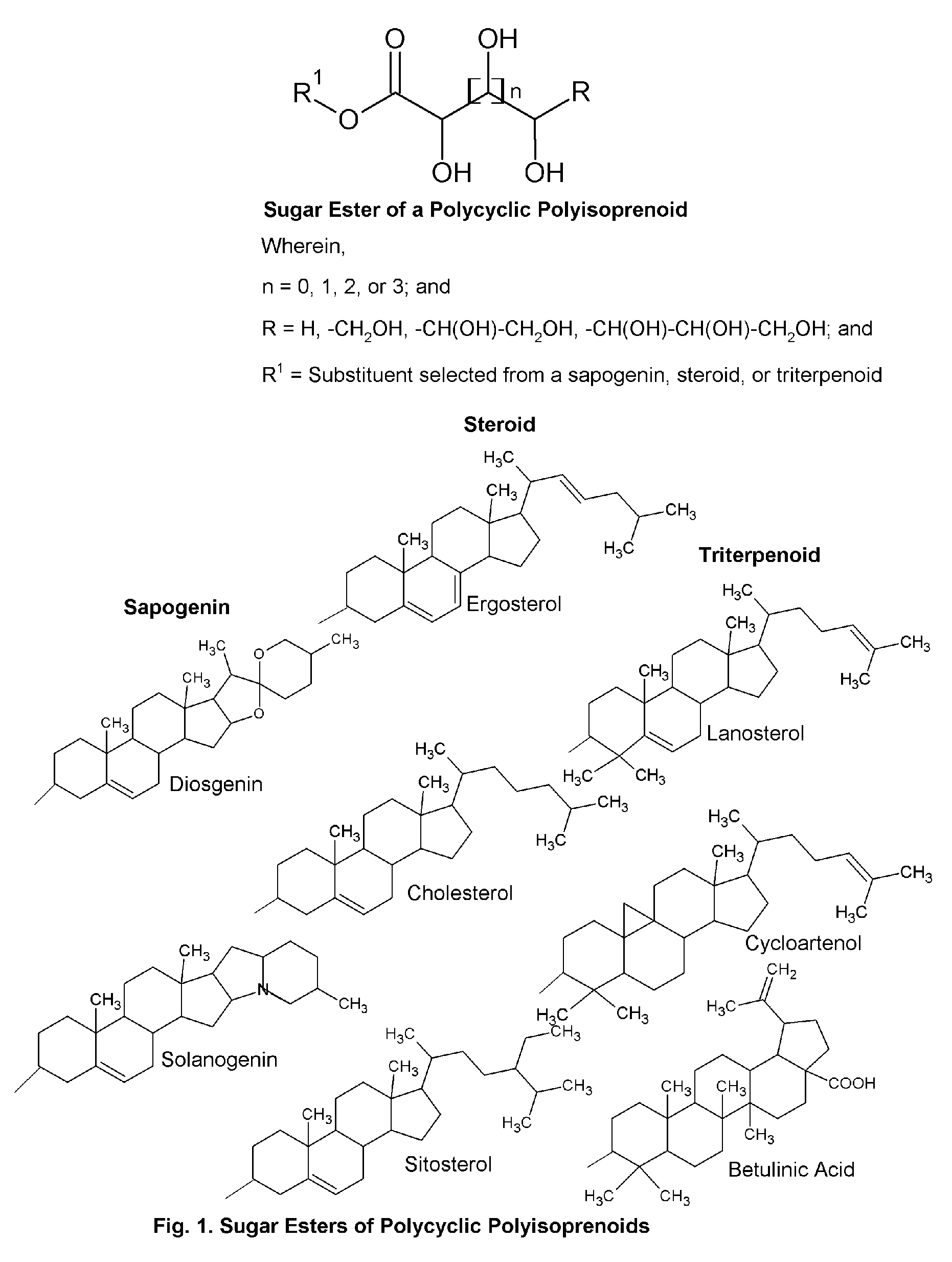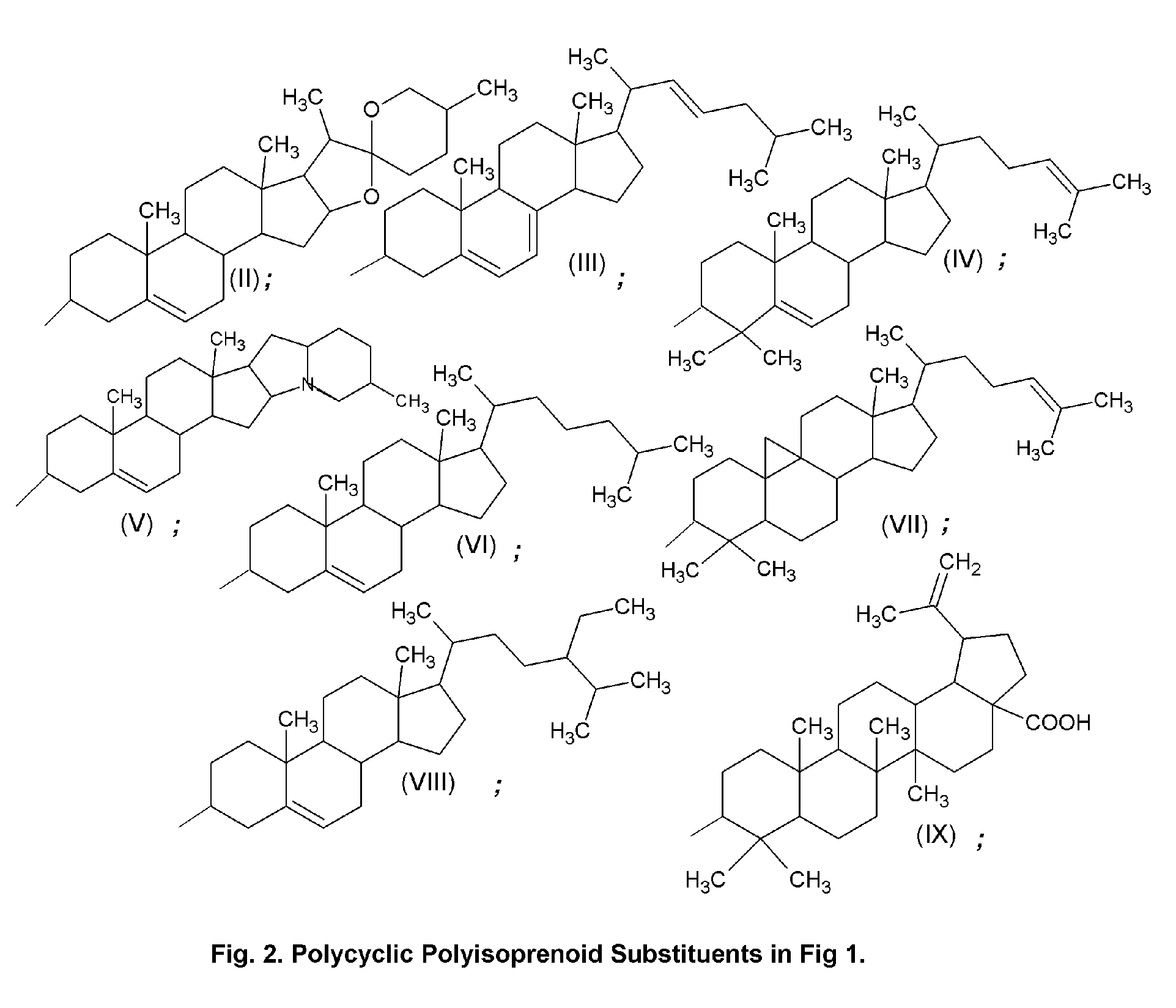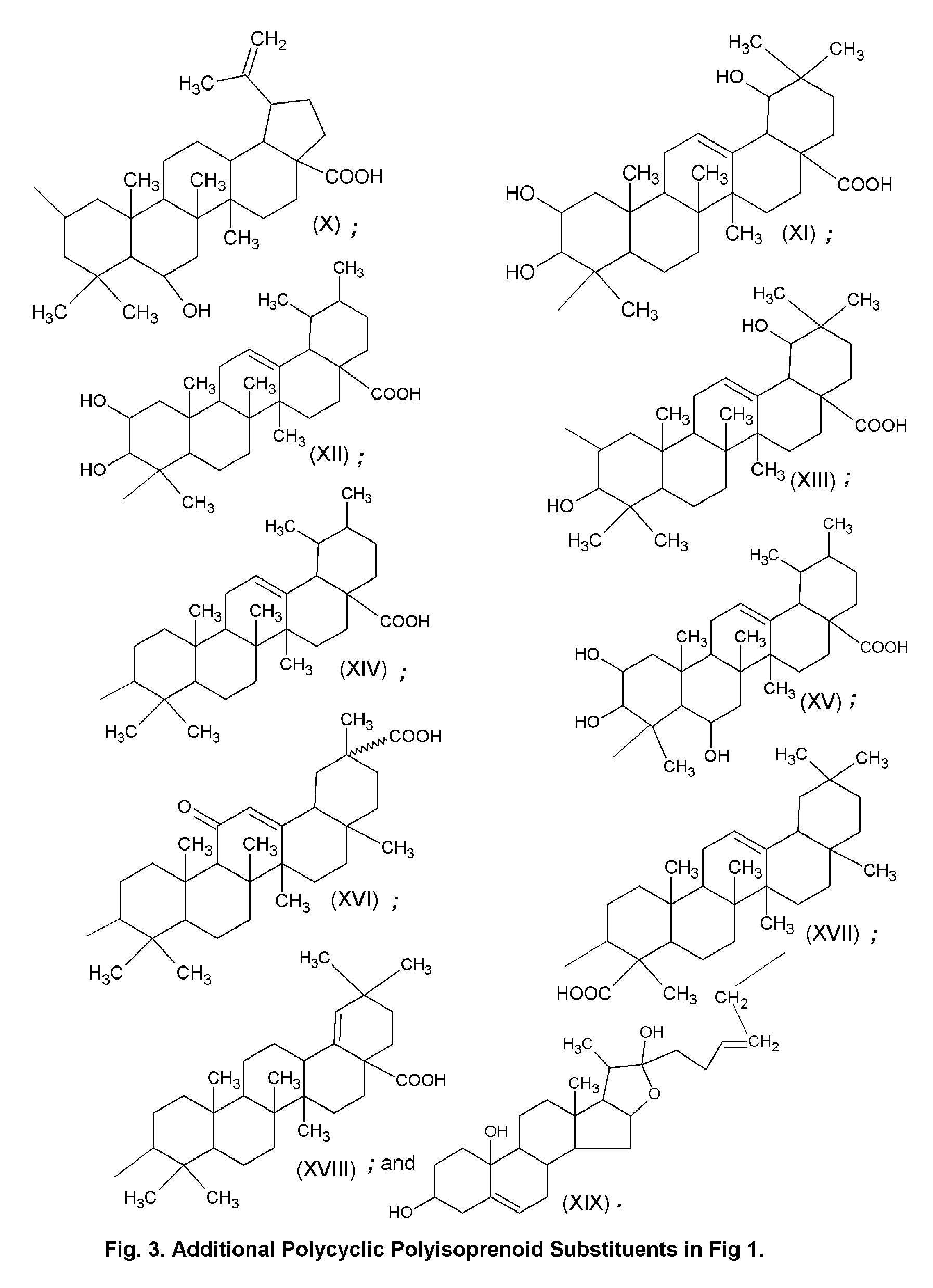Topical delivery system for phytosterols
a delivery system and phytosterol technology, applied in hair cosmetics, biocide, organic chemistry, etc., can solve the problems of distasteful and toxic saponins, low cholesterol and blood lipids, and poor sorption of phytosterols
- Summary
- Abstract
- Description
- Claims
- Application Information
AI Technical Summary
Benefits of technology
Problems solved by technology
Method used
Image
Examples
example 1
[0186]Preparation of Diosgenin Gluconate. Ingredients % Weight (1) Deionized water 10.0 (2) Diosgenin 5.0 (3) Polyethylene glycol 81.0 (4) Gluconolactone 4.0. Procedure. Mix (1) to (4) and heat at 80 to 95 degrees Celsius for two hours. A clear solution is obtained, which contains diosgenin gluconate. It can be used directly in subsequent cosmetic preparations.
[0187]Tigogenin gluconate and Hecogenin gluconate were similarly prepared by replacing diosgenin by tigogenin and hecogenin, respectively, in the above preparation.
example 2
[0188]Skin Whitening Serum with Sebum Reduction. Ingredients % Weight (1) Deionized water 20.0 (2) Quinacetophenone 5.0 (3) Methylpropanediol 68.0 (4) Dimethicone copolyol 4.0 (5) Preservatives 0.5 (6) Diosgenin gluconate 1.5. (7) Ammonium Acryloyldimethyltaurate / VP copolymer 1.0 Procedure. Make main batch by mixing (2) to (6) at room temperature. Pre-mix (1) and (7) to a clear paste and add to main batch with mixing. The product has a clear to slightly hazy syrup-like light blue appearance, typical of a skin serum product. It is absorbed rapidly with a silky smooth skin feel.
example 3
[0189]Antiaging, Topical Treatment Cream with Hecogenin Gluconate. Ingredients % Weight (1) Deionized water 79.5 (2) Cetearyl alcohol (and) dicetyl phosphate (and) Ceteth-10 phosphate 5.0 (3) Cetyl alcohol 2.0 (4) Glyceryl stearate (and) PEG-100 stearate 4.0 (5) Caprylic / capric triglyceride 5.0 (6) Resacetophenone 3.0 (7) Hecogenin gluconate 1.0 (8) (8) Preservatives 0.5. Procedure. Mix 1 to 5 and heat to 75-80° C. Adjust pH to 4.0 4.5. Cool to 35-40 C with mixing. Add 6 to 8 with mixing. Adjust pH to 4.0-4.5, if necessary. White to off-white cream.
PUM
| Property | Measurement | Unit |
|---|---|---|
| pH | aaaaa | aaaaa |
| pH | aaaaa | aaaaa |
| temperature | aaaaa | aaaaa |
Abstract
Description
Claims
Application Information
 Login to View More
Login to View More - R&D
- Intellectual Property
- Life Sciences
- Materials
- Tech Scout
- Unparalleled Data Quality
- Higher Quality Content
- 60% Fewer Hallucinations
Browse by: Latest US Patents, China's latest patents, Technical Efficacy Thesaurus, Application Domain, Technology Topic, Popular Technical Reports.
© 2025 PatSnap. All rights reserved.Legal|Privacy policy|Modern Slavery Act Transparency Statement|Sitemap|About US| Contact US: help@patsnap.com



